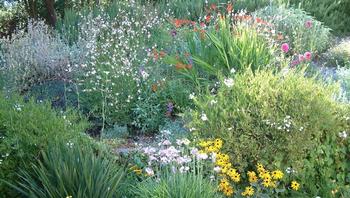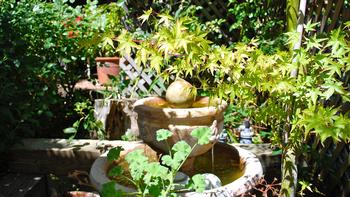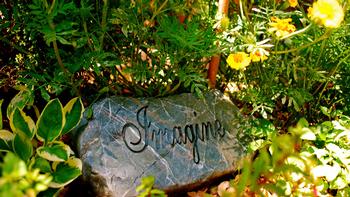It’s all about the soil
-
Dot Zanotti Ingels
-
We have been working with limited resources in our gardens for the last few years. It is so crucial for us to remember that the secret to any lush, bountiful garden is good soil. What we know about our soil and how we treat it is especially essential when we are trying to make lots out of less.
 Continue adding compost and mulch to sustain the health of your soil. Photo: SmugMug
Continue adding compost and mulch to sustain the health of your soil. Photo: SmugMugSoil is the loose surface material covering most land. It consists of inorganic particles (think rocks, shells, etc.), organic matter (think living organisms), air, and water. Soils vary significantly in chemical and physical properties. They offer support and protection to the plant’s roots. It is one of our planet’s most dynamic and important natural resources.
Before you start gardening outside, you should find out what kind of soil you have to work with now and what type of soil you will need to grow what you want. When you dig in any soil, you will see that it is made of layers. Because soil is dynamic, it is constantly changing. Some components are added, some are lost, some move from place to place within the soil, and some are transformed into others.
There are a few basic soil types. This lush garden started with compacted clay soil. Amendments work! Photo: Lisa Ingels
This lush garden started with compacted clay soil. Amendments work! Photo: Lisa Ingels- Clay soil. We have lots of this in Marin. It’s made up of tiny particles that bind tightly together. It doesn’t drain or breathe well.
- Sandy soil is made up of fine particles of grit and sand. It is very free draining and is often lacking in organic material. It dries out quickly and doesn’t hold nutrients well.
- Loamy soils are relatively equal parts of sand, clay, and in-between particles called silt. You can find lots of organic matter here.
Although soil can be all sand, all clay, or all silt, that is rare. Most soils are some combination of all three.
You can do a soil test from a kit purchased at a garden center or send a sample to a soil-testing lab, but you can tell a lot about your soil by digging some up and rolling it around in your hands. For example, take a small handful of wet soil and roll it between your palms. If your soil is clay, it makes a snake you can bend without it breaking. If you cannot roll it at all, it is either sandy soil or made up of other inorganic stuff. The wet loam soil snake will crumble when you bend it. Your local garden center can also help by telling you the general conditions of the soil in your area.
Soil amendments can be a vital resource for ensuring a productive garden. Unfortunately, many neglected urban soils are compacted and low in organic matter. Soil amendments are designed to add organic material back into the soil, reduce compaction, maximize watering effectiveness and improve soil tilth. So what can you do to improve and amend your soil? Rich soil brings lush growth and a garden to imagine. Photo: Lisa Ingels
Rich soil brings lush growth and a garden to imagine. Photo: Lisa Ingels- Add compost. Compost is organic material decomposed into a stable state that’s available for adding to soil. Anything that was once alive can be composted. You can make your own or get it from a source that makes it from our green can debris.
- Manure can give your garden an incredible boost in nutrients. Make sure the manure you use has been well aged or composted.
You can add amendments to soil anytime, but the best times for working them into an existing garden area are in the spring before planting and in the fall when putting the garden to bed. Generally, two to three inches is sufficient to gently work into the soil with a shovel.



